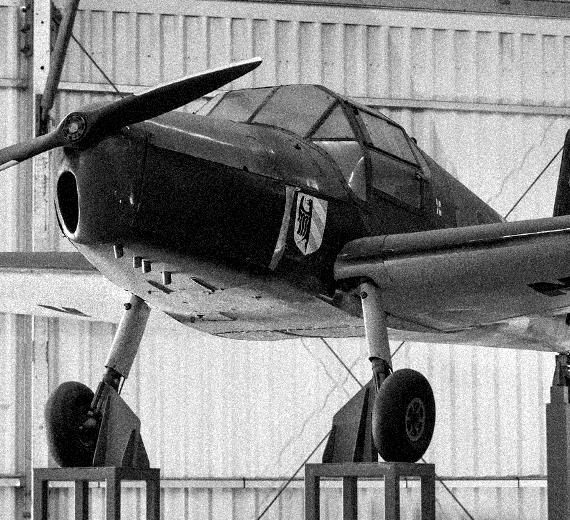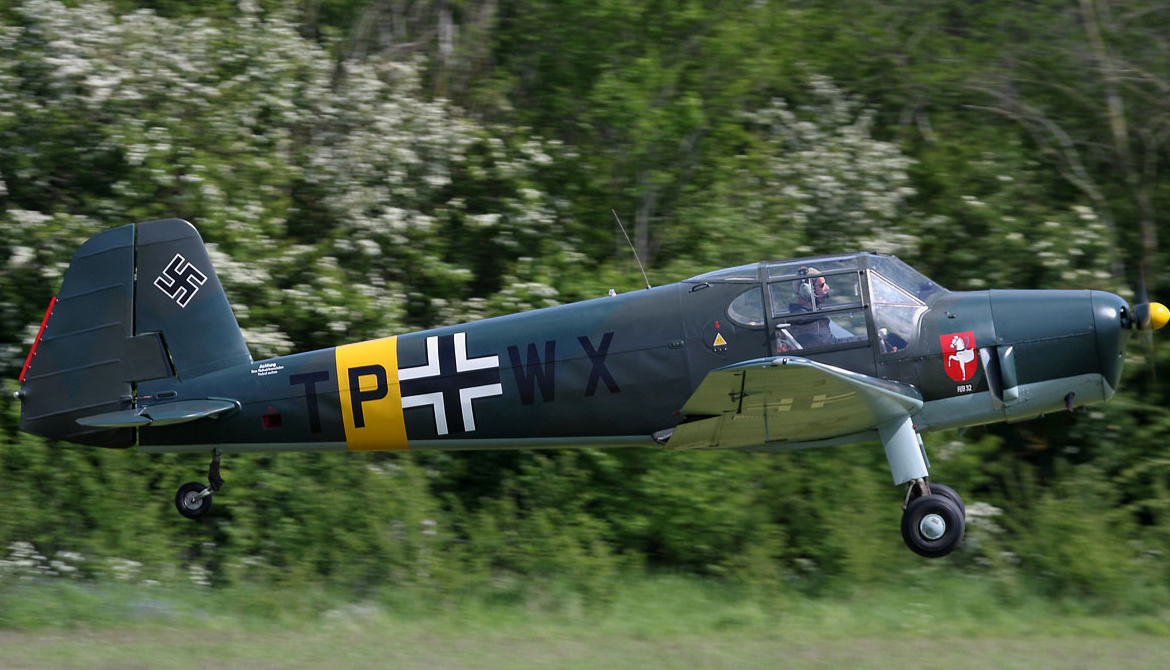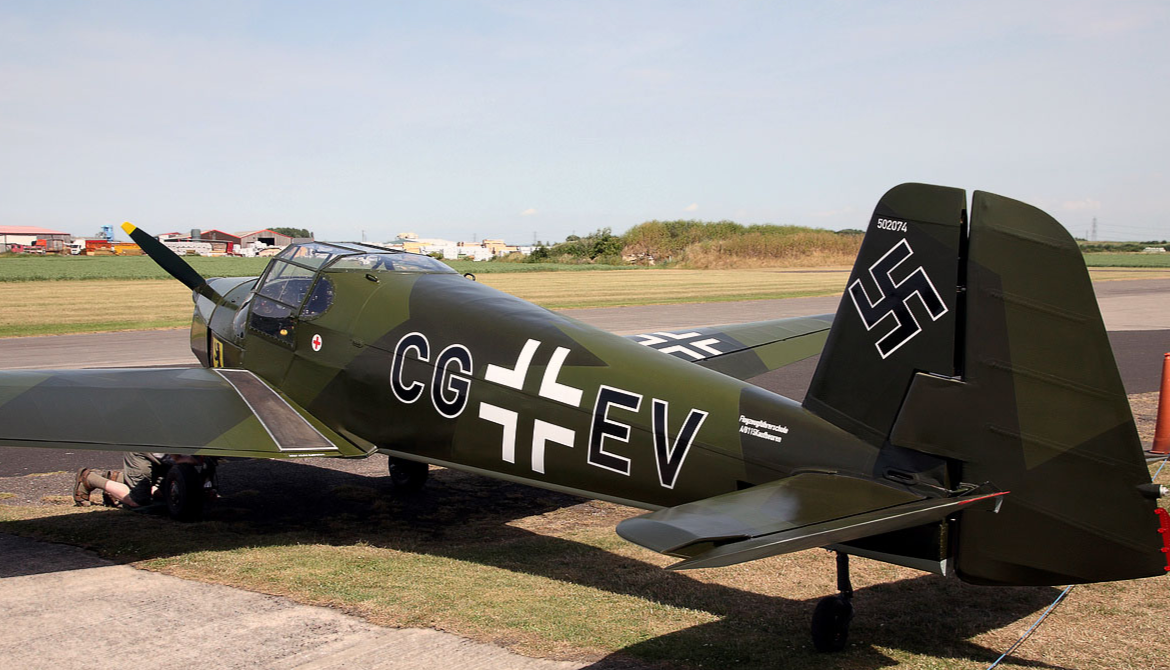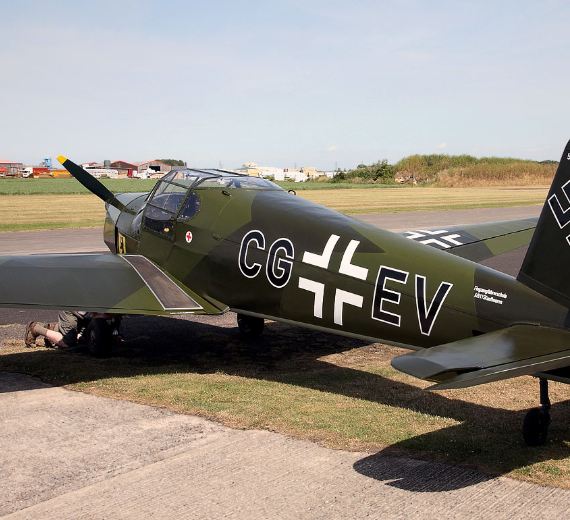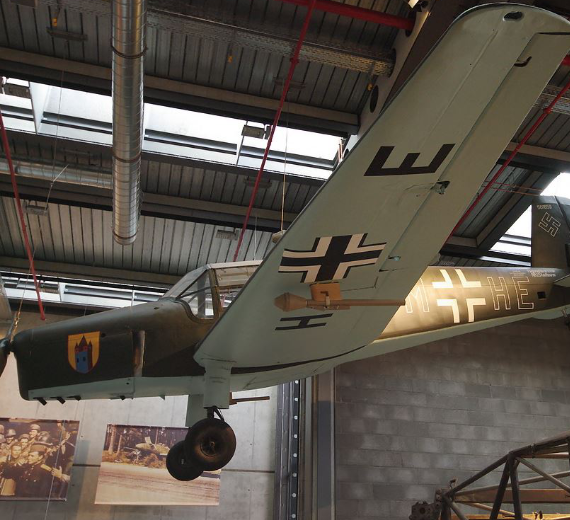.
History Bücker-Flugzeugbau GmbH
Bücker Bü 181 Bestmann
Manufacturer Bücker First flight February 1939

The Bücker Bü 181 Bestmann is a two-seater, single-engine aerobatic monoplane aircraft built by Bücker Flugzeugbau in Rangsdorf, near Berlin and extensively used by the Luftwaffe in World War II.
The Bücker Bü 181 was named Bestmann after a German maritime term designating a member of the deck crew on coastal or fishing vessels. The prototype Bü 181 (D-ERBV) made its maiden flight in February 1939 with Chief Pilot Arthur Benitz at the controls. After thorough works and official flight testing by the Reichsluftfahrtministerium (RLM) the Bü 181 was nominated to be the standard primary trainer for the Luftwaffe. Series production of the Bü 181 commenced in 1940. The production types were designated B to C with only slight variations between each, and could be powered by the Hirth HM 500 A or B
Design


The Bü 181 aircraft was a single-engine low-wing monoplane with fixed undercarriage, split flap, twin controls and two adjustable seats arranged side-by-side. The cabin section of the fuselage was of a tubular steel frame construction whereas the rear of the fuselage had a wooden shell. The wing assembly and tail unit were also of wooden shell construction. All the rudders, elevators and ailerons had wooden ribs and are covered in fabric. The flaps were metallic on the B types and wood on the C types. The Bü 181 Bestmann was powered by a 78 kW (105 hp) four-cylinder Hirth HM 500A or B piston engine. The aircraft was designed for training flights, pleasure trips and aerobatics. Its strength corresponded to Stress Group 5 with a limited load (single occupancy) and Stress Group 4 fully laden.
0
KmCeiling
0
KmCombat RANGE
0
Km/hAircraft Speed
0
Max Crew
Photo Gallery
Bücker-Flugzeugbau GmbH
Bücker Bü 181 Bestmann


Bücker-Flugzeugbau GmbH
Bücker Bü 181 Bestmann
General Info
-
-
- Crew: 2
- Length: 7.85 m (25 ft 9 in)
- Wingspan: 10.6 m (34 ft 9 in)
- Height: 2.05 m (6 ft 9 in)
- Wing area: 13.5 m2 (145 sq ft)
-
Powerplant
-
- Empty weight: 480 kg
- Max takeoff weight: 750 kg
- Powerplant: 1 × Hirth HM 500A or 500B 4-cyl. inverted air-cooled in-line piston engine, 78 kW (105 hp)
- Propellers: 2-bladed fixed-pitch propeller
-
Performance
- Maximum speed: 215 km/h (134 mph, 116 kn) at sea level
- Cruise speed: 195 km/h (121 mph,
- Never exceed speed: 440 km/h
- Range: 800 km (500 mi, 430 nmi)
- Service ceiling: 5,000 m (16,000 ft)
Links to Youtube & Others
Of the over 4,000 Bü 181s originally built, only about 10 examples remain. One restored example of a Gomhouria 181 MK6 in Luftwaffe markings, registration G-TPWX, is known to be airworthy.
Bücker-Flugzeugbau GmbH
Bücker Bü 181 Bestmann
Although built primarily as a trainer for the Luftwaffe, the type also performed other duties such as courier & liaison.
Youtube Link
Test pilot and sister-in-law of Claus von Stauffenberg, Melitta Schenk Gräfin von Stauffenberg, was flying a Bücker Bü 181 when she was shot down and fatally wounded in 1945.
